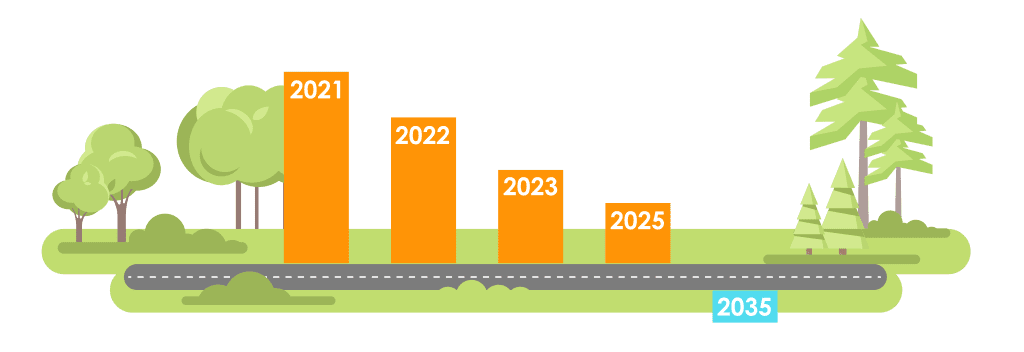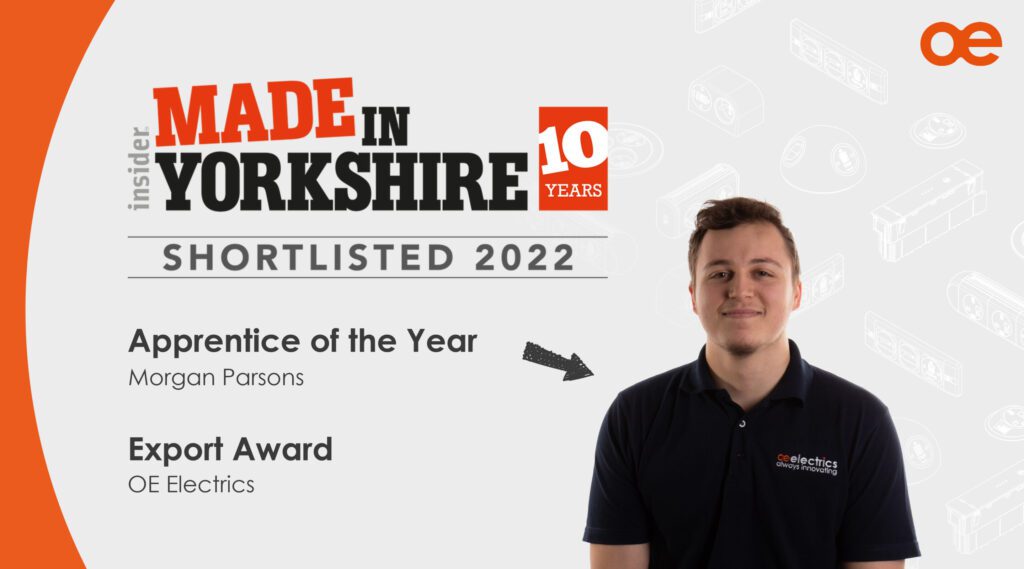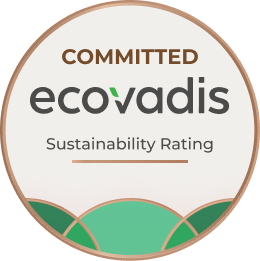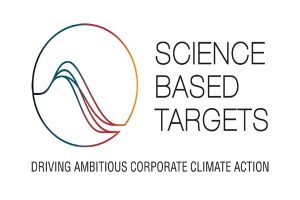


“OE sees a future where access to power is no longer limited by location.
We believe in sharing this vision with everyone, to create a more agile world.”
– Tim Hobbs, Founder
Achieving net zero emissions for any manufacturing company is a challenge. Although we would like to source our materials and components locally, like most manufacturers we source materials and components from many places around the world.
In order to make the biggest impact in the shortest amount of time we have decided to focus on areas where we have the most control while at the same time making an impact on the wider issue at a more reasonable pace to ensure the security of the business.

Although we publish our ESG report annually, the fruits of our efforts towards sustainability are being experienced every day. Here are some ESG stories that have made us smile...

We have created CO2e datasheets for all our major products. Due to the infinitely configurable nature of our range, we have picked a 'typical' example (often the best- configuration) of each product to base our CO2e datasheets on.
Our ESG programme spans the entire OE Group, from Design to Manufacture, and customers to colleagues.



In order to take action to reduce emissions, we need to understand and measure where they’re sourced from in the first place. The three scopes are a way of categorising the different kinds of emissions a company creates in its own operations and in its wider ‘value chain’ (its suppliers and customers).
Emissions from sources that an organisation owns or controls directly – for example from burning fuel in our fleet of vehicles (if they’re not electrically-powered).
Emissions that a company causes indirectly and come from where the energy it purchases and uses is produced. For example, the emissions caused when generating the electricity that we use in our buildings would fall into this category.
Emissions that are not produced by the company itself and are not the result of activities from assets owned or controlled by them, but by those that it’s indirectly responsible for up and down its value chain. An example of this is when we buy, use and dispose of products from suppliers.



OE House,
Calder Park,
Thomas Maddison Ln,
Durkar,
Wakefield
WF4 3GH
OE Showroom
1a Briset Street
London
EC1M 5NR
UK
| Cookie | Duration | Description |
|---|---|---|
| cookielawinfo-checkbox-analytics | 11 months | This cookie is set by GDPR Cookie Consent plugin. The cookie is used to store the user consent for the cookies in the category "Analytics". |
| cookielawinfo-checkbox-functional | 11 months | The cookie is set by GDPR cookie consent to record the user consent for the cookies in the category "Functional". |
| cookielawinfo-checkbox-necessary | 11 months | This cookie is set by GDPR Cookie Consent plugin. The cookies is used to store the user consent for the cookies in the category "Necessary". |
| cookielawinfo-checkbox-others | 11 months | This cookie is set by GDPR Cookie Consent plugin. The cookie is used to store the user consent for the cookies in the category "Other. |
| cookielawinfo-checkbox-performance | 11 months | This cookie is set by GDPR Cookie Consent plugin. The cookie is used to store the user consent for the cookies in the category "Performance". |
| viewed_cookie_policy | 11 months | The cookie is set by the GDPR Cookie Consent plugin and is used to store whether or not user has consented to the use of cookies. It does not store any personal data. |